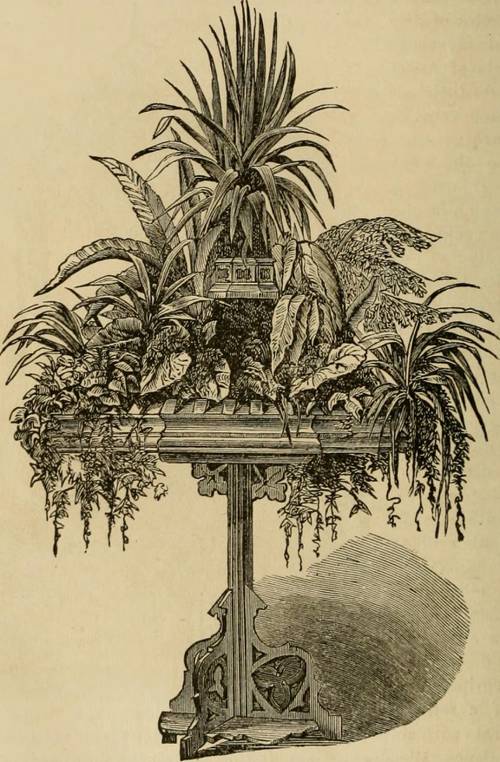
FAQ About Indoor Plant Temperature Preferences

What is the ideal temperature range for most indoor plants?
Most indoor plants thrive in temperatures ranging from 60°F to 75°F (15°C to 24°C). However, specific requirements can vary depending on the plant species. It is crucial to research the preferred temperature range for each plant type.

How does temperature affect indoor plant growth?
Temperature plays a significant role in plant growth, affecting processes such as photosynthesis and respiration. Too cold or too hot environments can slow plant growth, reduce photosynthesis, and cause stress to plants, potentially leading to wilting or damage.

What temperature is too cold for indoor plants?
While tolerance varies by species, most indoor plants cannot tolerate temperatures below 50°F (10°C). Prolonged exposure to cold temperatures can lead to leaf drop, wilting, and even plant death.

How can you maintain optimal temperature conditions for indoor plants?
To maintain optimal temperatures for indoor plants, place them away from cold drafts, heaters, and direct airflow from air conditioners. You can also monitor temperatures with a digital thermometer and adjust the room conditions accordingly.

Do succulents have different temperature preferences compared to other plants?
Yes, succulents generally prefer warmer temperatures and can tolerate ranges from 60°F to 80°F (15°C to 27°C). They are more tolerant of heat but should still be protected from freezing temperatures and frost.

Can indoor plants survive sudden temperature changes?
Most indoor plants do not cope well with sudden temperature changes, which can cause stress and damage. It is important to gradually acclimate plants to new environments and maintain steady temperatures as much as possible.

Do tropical indoor plants require higher temperatures?
Yes, tropical indoor plants generally prefer warmer environments with temperatures ranging from 65°F to 85°F (18°C to 29°C). They thrive in conditions that mimic their natural tropical habitat.

What are the signs of temperature stress in indoor plants?
Signs of temperature stress in indoor plants include wilting, leaf curling, yellowing or browning leaves, and dropping leaves. These symptoms indicate that the plant might be in an environment that is too hot or too cold.

How do seasonal changes affect indoor plant temperatures?
Seasonal changes can lead to fluctuations in indoor temperatures. During winter, heating systems can create dry, warm conditions, while summer can introduce heat stress if not managed. Ensuring consistent care and adjustment of plant placement during seasonal transitions is important.

What temperature do ferns prefer indoors?
Most ferns prefer cooler, humid environments with temperatures ranging from 60°F to 75°F (15°C to 24°C). They should be kept away from direct sunlight and drafts to maintain these conditions.

Are there indoor plants that can tolerate cold temperatures?
Some indoor plants, such as certain types of ferns and succulents like jade plants, can tolerate slightly cooler temperatures, but generally, prolonged exposure to frost or freezing temperatures should be avoided.

How does humidity interplay with temperature for indoor plants?
Humidity plays a critical role in complementing the temperature, especially for tropical plants. Higher humidity helps prevent excessive water loss from leaves at higher temperatures. Balancing both factors is key to healthy indoor plant growth.

Is it better to place indoor plants near windows during winter?
While windows provide essential light, they can also be a source of cold drafts during winter. It is important to ensure that the window areas do not subject plants to drastic temperature drops; using insulating curtains or moving plants away from the window at night might be beneficial.

What are the best ways to monitor indoor plant temperatures?
Using a digital thermometer or a hygrometer can help monitor both temperature and humidity levels. Some devices even provide alerts when conditions fall outside the desired range, ensuring timely adjustments.

Do indoor flowering plants have special temperature needs?
Flowering indoor plants often have specific temperature needs to bloom effectively. Typically, they might require a drop in nighttime temperatures to initiate flowering, simulating natural environmental cues.

Can heating systems harm indoor plants during winter?
Yes, direct exposure to heating systems can dry out plants and create excessively warm air, which might not be ideal. It's best to keep plants at a safe distance from heaters and supplement their humidity as needed.

What is the ideal temperature range for herbs grown indoors?
Herbs usually thrive at temperatures between 65°F and 75°F (18°C to 24°C). Consistent temperatures within this range support robust growth and flavor potency.

Can artificial lights affect indoor plant temperature needs?
Artificial lights, especially high-intensity types, can increase the ambient temperature around plants. It's important to manage light exposure to prevent overheating and ensure lights are positioned at safe distances.

How should I adjust indoor plant care during a heatwave?
During a heatwave, ensure plants are well-watered and move them away from direct sunlight to mitigate excess heat. You can also increase humidity around plants by misting or using a humidifier.

Do indoor plants need different temperatures at night?
Some indoor plants do benefit from slightly cooler night temperatures, which mimic natural conditions and promote flowering and respiration processes. Ensuring a slight temperature drop at night for suitable plants can help maintain their growth cycle.
